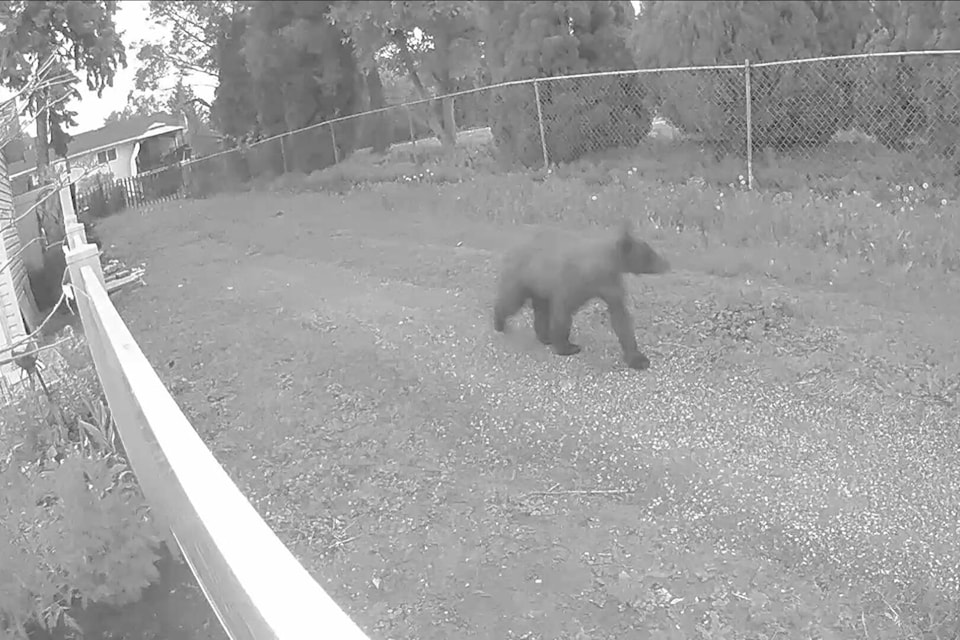A Vernon woman captured video of a bear strolling around her property early Thursday morning, which should serve as a reminder that bears are out and about this time of year and there are steps people can take to ensure the animals can coexist peacefully with humans.
Betty Beck, who captured the video in the back alley behind 25th Street off 39A Avenue, said it herself: It’s “a reminder to secure your garbage and watch your kids and pets.”
North Okanagan Conservation Officer Ken Owens said Friday that it’s the time of year to check back yards for any attractants that could lead bears down a potentially fatal path.
“Bears are definitely out of the den and they’ve lost a lot of their body fat while they’re in the den, so they’re definitely hungry,” Owens told The Morning Star. “We get so many bears this time of year, and breeding season has begun.”
Owens said the Conservation Officer Service’s (COS) call volumes in Vernon have spiked of late — not unusual for this time of year, especially with the hot and dry weather — and residents and businesses alike need to make sure their properties are free of non-natural attractants.
“Primarily what we’re dealing with right now is bears into garbage, bears into birdseed, bears into compost, and it’s so avoidable,” Owens said.
Owens pointed out that under the BC Wildlife Act, it is an offence for a property or business owner to have an attractant out and available for bears to get into. The fine for this offence is $230. The COS does enforcement in tandem with local bylaw authorities to crack down on residents whose properties may lead to garbage-habituated bears, and conducts bear attractant audits in the Okanagan to ensure compliance with the Wildlife Act.
“Even if it’s a sow with newborn cubs, they get habituated to people, they lose their fear, they get food-conditioned and it progressively gets worse and worse where it jeopardizes public safety and it jeopardizes bears’ lives,” he said.
If a bear becomes too habituated to garbage or other attractants, it can lead the COS to have to trap and put the bear down.
“It’s not rocket science, and every year we need to coexist with bears, and it’s so easily done but we need buy-in from everybody in the community.”
The COS has several tips for keeping people and bears safe and preventing property damage:
• Keep all garbage securely stored until collection day. Store attractants in a sturdy building or place in a certified bear-resistant garbage container. Use certified bear resistant garbage containers community wide. A complete list of certified products can be found here: IGBC Certified Bear-Resistant Products List.
• Bird feeders often become bear-feeders, so please, only feed birds during the winter months. Take feeders down between March and November. Keep ground free of seeds.
• If you compost in bear country, create your compost pile inside a bear resistant electric fence.
The public can report conflicts with dangerous wildlife, where there is a threat to public safety, to the Report All Poachers and Polluters (RAPP) hotline toll-free at 1 877 952-RAPP (7277) or visit the RAPP website at www.rapp.bc.ca.
READ MORE: North Vancouver man fined for repeatedly feeding black bear and cub
READ MORE: Hibernating bear keeping cozy underneath Salmon Arm residence
